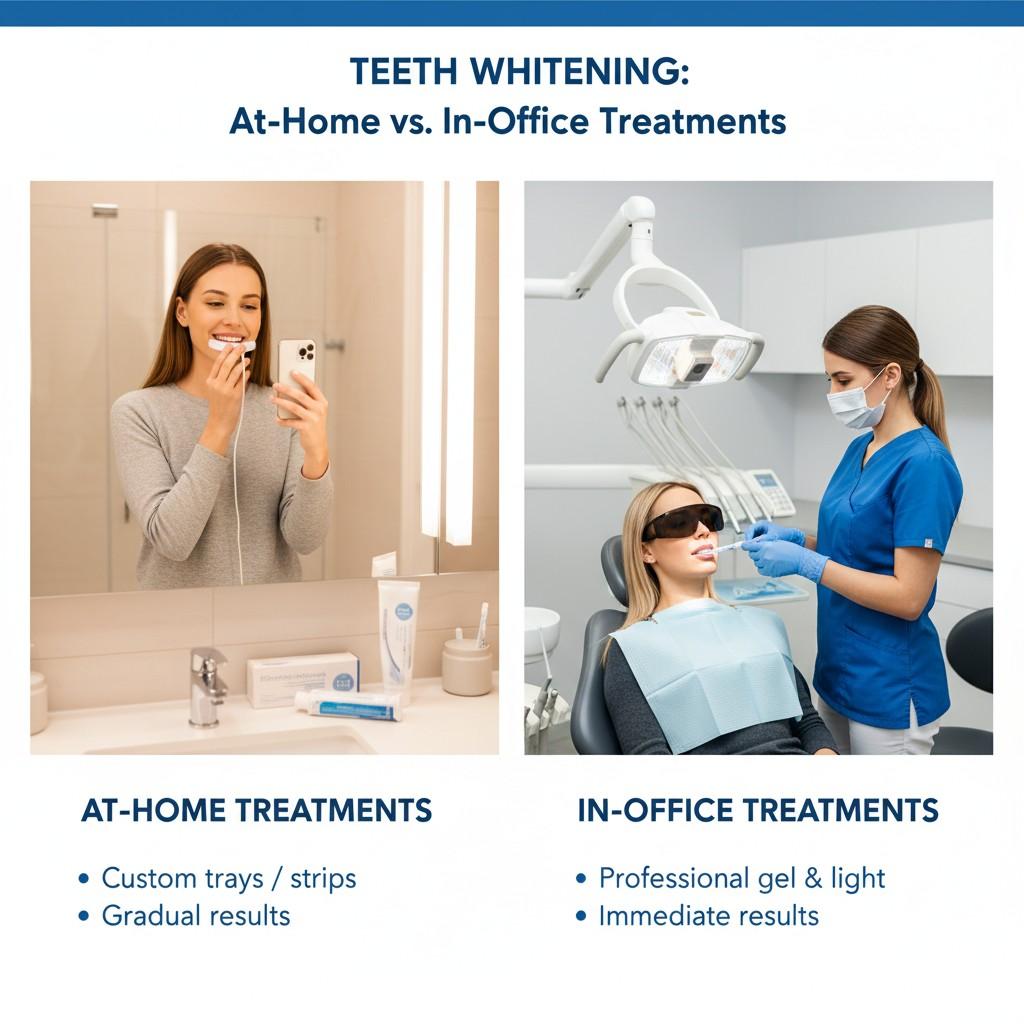A bright, white smile can boost your confidence, enhance your appearance, and leave a lasting impression. Over time, however, factors like coffee, tea, wine, smoking, and aging can stain and discolor your teeth. Fortunately, modern dentistry offers a range of teeth whitening options to restore that radiant smile. At Central Oakville Dental Care, we’re often asked: What’s better—at-home teeth whitening or in-office treatment?
Let’s break down the pros and cons of each to help you decide which option is best for your needs, budget, and lifestyle.
Understanding Teeth Whitening
Teeth whitening is a cosmetic dental procedure that removes stains and lightens the color of your teeth. It works by using peroxide-based bleaching agents (either hydrogen peroxide or carbamide peroxide) to break down stains on the tooth enamel.
While both at-home and in-office treatments use similar active ingredients, the concentration, application method, and speed of results can vary significantly.
In-Office Teeth Whitening
What Is It?
In-office whitening is performed by your dentist using a high-concentration bleaching gel, often combined with a special light or laser to accelerate the whitening process. Treatments typically take about 60–90 minutes.
Pros:
- Faster Results
In just one visit, you can see a noticeable difference—often several shades whiter. This is ideal for anyone seeking immediate results, such as before a wedding, job interview, or special event. - Professional Supervision
Because the procedure is performed under the care of a dental professional, it ensures safety, proper technique, and minimized risk of sensitivity or gum irritation. - Stronger Whitening Agents
The bleaching agents used in-office are more powerful than those available over the counter, which allows for more dramatic and longer-lasting results. - Customized Treatment
Your dentist can adjust the treatment based on your specific needs, tooth sensitivity, and desired level of whitening.
Cons:
- Higher Cost
In-office whitening is more expensive, often ranging from $300 to $600 per session. - Temporary Sensitivity
- Some patients experience short-term tooth or gum sensitivity, although this is generally mild and manageable.
At-Home Teeth Whitening
What Is It?
At-home whitening includes over-the-counter products like whitening strips, gels, trays, and toothpaste, as well as custom take-home kits provided by your dentist.
Pros:
- Convenience
Whitening at home allows you to do it on your schedule, without needing to book an appointment. - Lower Cost
Over-the-counter products are generally affordable, ranging from $20 to $100. Dentist-provided take-home kits may cost more but are still usually less than in-office treatments. - Gradual Whitening
For those who prefer subtle, progressive changes in tooth color, at-home treatments may be the preferred option. - Custom Trays Available
Dentist-supervised take-home kits come with custom-fitted trays that provide more even whitening and reduce the risk of gum irritation.
Cons:
- Slower Results
Most at-home treatments require consistent use over several days or weeks to achieve noticeable results. - Weaker Formulas
The bleaching agents are less concentrated, which means they may not be effective on deep or stubborn stains. - Greater Risk of User Error
Improper use of over-the-counter products can lead to uneven whitening, gum irritation, or tooth sensitivity.
Which Option Is Right for You?
Choosing between in-office and at-home whitening depends on your goals, budget, and lifestyle.
- Choose In-Office Whitening If:
- You want fast, dramatic results.
- You have deep or tough stains.
- You have an upcoming event and want a quick confidence boost.
- You have a history of tooth sensitivity and want professional supervision.
- Choose At-Home Whitening If:
- You prefer a more affordable option.
- You’re not in a rush and are okay with gradual results.
- You want the convenience of whitening on your own time.
- You have only mild surface stains.
At Central Oakville Dental Care, we often recommend a combined approach—starting with in-office whitening for immediate results, followed by take-home trays for maintenance. This method offers the best of both worlds: speed, longevity, and convenience.
Whitening Is Not for Everyone
It’s important to remember that not all tooth discoloration responds to whitening. For example, internal stains caused by trauma, certain medications, or dental fluorosis may require alternative treatments like veneers or bonding.
Also, teeth whitening does not work on crowns, veneers, or fillings. That’s why a professional dental evaluation is crucial before starting any whitening treatment.
Final Thoughts
Whether you choose in-office whitening or an at-home solution, the key to a brighter smile lies in safe, effective care and realistic expectations. At Central Oakville Dental Care, we’re here to guide you through every step of your whitening journey—from assessment to maintenance.
If you’re ready to transform your smile, schedule a consultation today and let us help you choose the right whitening option for your lifestyle and goals.





